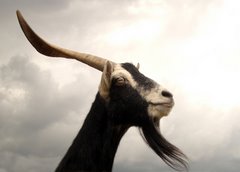Friday, November 6, 2009
T-Shirt Competition
To this end, we are pleased to announce the 2nd Annual Juried T-shirt Design Contest
- We are accepting open submissions for an alternative design for the Whitman College Mascot.
- The contest is open to all current students.
- Selections will be publicly displayed.
- The winner will be by popular vote.
The winning design will be placed on a T-shirt to be sold in the Bookstore on campus, and the artist will receive a semester's worth of free textbooks*.
Stop by the Bookstore to see our T-shirts with last year's winning design by Michael Hanley.
Deadline for submission is 11:59:59pm, January 31, 2010
Please stop by the Bookstore for an entry form & complete contest rules.
* based on actual purchases from the Whitman College Bookstore up to $500
Wednesday, November 4, 2009
Window Decorating Contest
Event: Window Decorating Contest!!!
Start Time: Monday, November 2 at 12:00am
End Time: Monday, November 16 at 12:00am
Where: Reid Campus Center
To see more details and RSVP, follow the link below:http://www.facebook.com/n/?event.php&eid=162615804599&mid=15bcfc5G4d90d958G113a84fG7
Wednesday, October 21, 2009
Elements of design and composition
Tuesday, October 20, 2009
Frank Bauer


From what I can gather, Frank Bauer is a german artist who paints most of his works from photographs in a very photo-realistic style. If the photo is damaged or blurred, then that is incorporated into the painting as well, whether it be red-eye or backlighting. According to his website, Bauer paints portraits, still lives, landscapes, and nightlife scenes. I notice that his paintings of people, women especially, tend to be quite glamorously depicted...
Lucien Freud
http://upload.wikimedia.org/wikipedia/en/9/96/Freud%2C_After_Cézanne.jpg
Lucien Freud was born in Germany in 1922. Interestingly, he is the grandson of Sigmund Freud. Lucien's family moved to England in the 1930's and that is where he received his training in art. He went to Cedric Morris' East Anglian School of Painting and Drawing, and later at Goldsmith's College in England. Early in his career his paintings were often associated with surrealism, as we can see with his painting, "The Painter's Room". A lot of Lucien's later works were comprised of nude. Lucien is still alive, and his most recent paintings' subject matter largely includes horses. Lucien has a peculiar technique as well, one in which he clean his brush after every stroke.
Monday, October 19, 2009
Chris Ofili
A large walnut-panelled room designed by architect David Adjaye holds the paintings. The room is approached through a dimly-lit corrridor, which is designed to give a sense of anticipation. There are thirteen paintings altogether, six along each of two long facing walls, and a larger one at the shorter far end wall.
Each painting depicts a monkey based around a different colour theme (grey, red, white etc.). The twelve smaller paintings show a monkey from the side and they are based on a 1957 Andy Warhol drawing. The larger monkey is depicted from the front. Each painting is individually spotlit in the otherwise darkened room. The room is designed to create an impressive and contemplative atmosphere.
The paintings each rest on two round lumps of elephant dung, treated and coated in resin. There is also a lump of the dung on each painting. Strictly speaking, each work is mixed media, comprising paint, resin, glitter, mapping pins and elephant dung. The Upper Room as a whole is described by the Tate as an "installation".
The Upper Room is a reference to the Biblical Last Supper of Jesus and his disciples, hence the thirteen paintings. Ofili states the work is not intended to be offensive, but rather to contrast the harmonious life of the monkeys with the travails of the human race."
Ofili offers a wide range of art which I will post more about later. Enjoy.
Inke Essenhigh
David Hockney

In the video I just posted, David Hockney, a prominent British artist, talks about his views on painting, which actually reflect some of the things we've been talking about. He talks about using the fewest strokes possible, simplifying the painting, deliberately choosing a big brush. He also made me think: What types of things are unphotographable? What can't be captured in a photograph but needs the freedom of paint and canvas to be expressed?
Also, Hackney has been painting since the 50s. Each decade has given rise to a very different look for his paintings. His work in the 80s reminded me of Picasso. Here is an example...
